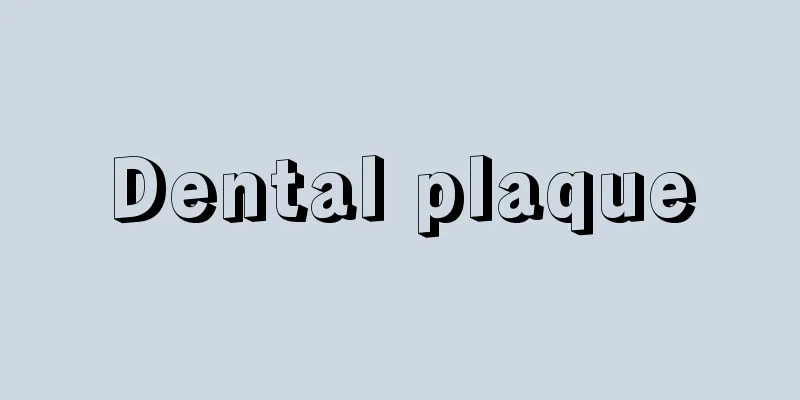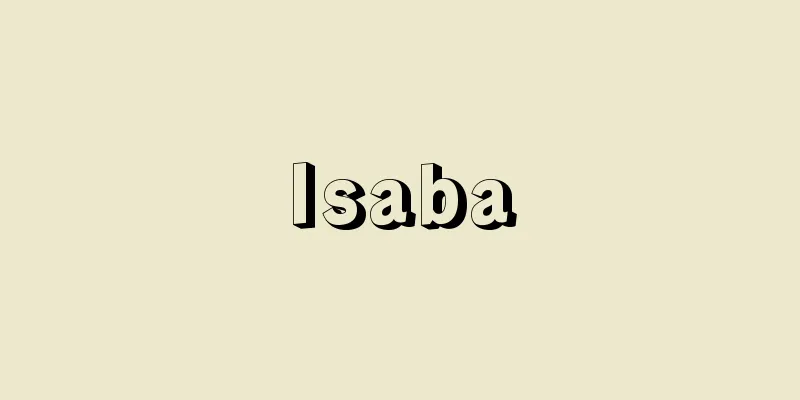Dental plaque

|
Dental plaque is a soft, milky white organic substance that adheres loosely to the surfaces of teeth and the oral mucosa, or to the surfaces of artificial objects such as dentures and fillings. It is also called dental plaque. Dental plaque can be easily removed with a toothbrush. It is composed of about 80% water and about 20% organic components. The majority of the organic components (70-80%) are bacteria, but it also contains substances produced by bacteria and solid matter contained in saliva. The mechanism of dental plaque formation is generally thought to be as follows. First, a sticky film derived from saliva is formed on the tooth surface. This film is called an acquired film and is made of a type of glycoprotein. Next, bacteria that normally reside in the human oral cavity attach to the tooth surface covered with the film and grow. These bacteria produce sticky substances as they grow. For example, Streptococcus mutans , which normally resides in the human oral cavity, is thought to be one of the bacteria that is strongly involved in dental plaque formation. This bacterium produces sticky substances called dextran and levan from sucrose, and bacteria attach to these substances and grow, forming a large amount of dental plaque. There are about 10 8 different types of bacteria in 1 gram of dental plaque (wet weight), and these bacteria maintain a natural equilibrium with each other. The ratio of these various bacteria changes depending on the degree of maturity of the dental plaque. In other words, in the very early stages of dental plaque formation, most of the bacteria are gram-positive Streptococcus and bacilli Nocardia , but over time the bacteria Actinomyces , bacilli and spirochetes increase, and gram-negative anaerobic bacteria become more prevalent. Dental plaque causes caries (tooth decay), gingivitis, and periodontitis. Tooth decay occurs mainly when the hard tissues that make up the teeth, such as enamel and dentin, are demineralized by acids, or when the organic matter contained in the tooth tissue is dissolved by organolytic enzymes. Some of the many types of bacteria present in dental plaque produce these acids and proteolytic enzymes. Calculus is formed by calcification of dental plaque. [Ihachi Kato] [References] | | |Source: Shogakukan Encyclopedia Nipponica About Encyclopedia Nipponica Information | Legend |
|
歯および口腔(こうくう)粘膜の表面、あるいは義歯、充填(じゅうてん)物などの人工物の表面に緩やかに付着する乳白色の軟らかい有機性の物質で、歯苔(したい)、プラークplaqueともいう。歯垢は歯ブラシで容易に除去することができる。組成は約80%の水分と約20%の有機成分からなっている。有機成分の大部分(70~80%)は細菌であるが、そのほかに細菌によって産生される物質および唾液(だえき)中に含まれる固形物なども含まれる。 歯垢の形成機序(メカニズム)については、一般に次のように考えられている。まず歯の表面に、唾液に由来する粘着性の物質の被膜が形成される。この被膜は獲得被膜とよばれ、一種の糖タンパクからなっている。次に被膜で覆われた歯の表面に人の口腔内に常在する細菌が付着して増殖する。これらの細菌は、増殖しながら粘着性の物質を産生する。たとえば、人の口腔内に常在するストレプトコッカス・ミュータンスStreptococcus mutansは歯垢形成に強く関与する細菌の一つと考えられている。この菌は、ショ糖からデキストランdextranおよびレバンlevanとよばれる粘着性の物質を産生するが、この物質にさらに細菌が付着増殖することによって多量の歯垢が形成される。歯垢1グラム中(湿重量)には約108個の多種類の細菌が存在しているが、これらの細菌は互いに自然の平衡を保っている。この種々の細菌の比率は、歯垢の成熟の度合いによって変化する。すなわち、ごく初期の歯垢は大部分がグラム陽性の球菌Streptococcus、桿菌(かんきん)Nocardiaであるが、時間の経過とともに糸状菌Actinomyces、桿菌ならびにスピロヘータなどが増加し、グラム陰性嫌気性菌が多くなってくる。 歯垢は、う蝕(しょく)(むし歯)、歯肉炎および歯周炎の原因となる。むし歯はおもに、歯を構成しているエナメル質、象牙(ぞうげ)質などの硬組織が酸によって脱灰されたり、歯質中に含まれる有機質が有機質分解酵素によって溶解されることによっておこる。歯垢中に存在する多くの種類の細菌のなかのある種のものは、こうした酸およびタンパク分解酵素を産生する。 なお、歯石とは、歯垢が石灰化することによって形成されたものである。 [加藤伊八] [参照項目] | | |出典 小学館 日本大百科全書(ニッポニカ)日本大百科全書(ニッポニカ)について 情報 | 凡例 |
>>: Thinking - thinking (English), pense´e (French), Denken (German)
Recommend
Kichijoji Shinden
...The name of a place in the eastern part of Mus...
Iino Dam - Iino Dam
...Also, from the feudal period to the early Meij...
Glareanus (English spelling)
1488‐1563 Swiss music theorist and humanist. His r...
Kashiwa [city] - Kashiwa
A city in northwestern Chiba Prefecture. It was in...
Russula lepida (English spelling) Russulalepida
…[Rokuya Imaseki]. . … *Some of the terminology t...
Umbria [province] - Umbria
A state in the Apennine Mountains in central Italy...
Stephanoaetus coronatus
…The mountain eagle family includes 20 species in...
APL - A Programming Language
A high-level programming language first proposed b...
Spirochete - Spirochete
A genus of filamentous, flexible, spiral-shaped s...
Takasugi Shinsaku
He was a central figure in the anti-shogunate fac...
Pseudocyst - pseudocyst
...A general term for diseases in which a lumen-c...
Katashirogusa (one-sided white grass)
...One theory is that the name "hankesho&quo...
Indos - Indos
...the phenomenon in which mixed-race children ar...
House of Bourbon - Bourbonke (English spelling) Bourbons
The royal family that ruled France from 1589 to 17...
Crane ship - Kuransen
A ship equipped with a large crane, specialized i...









